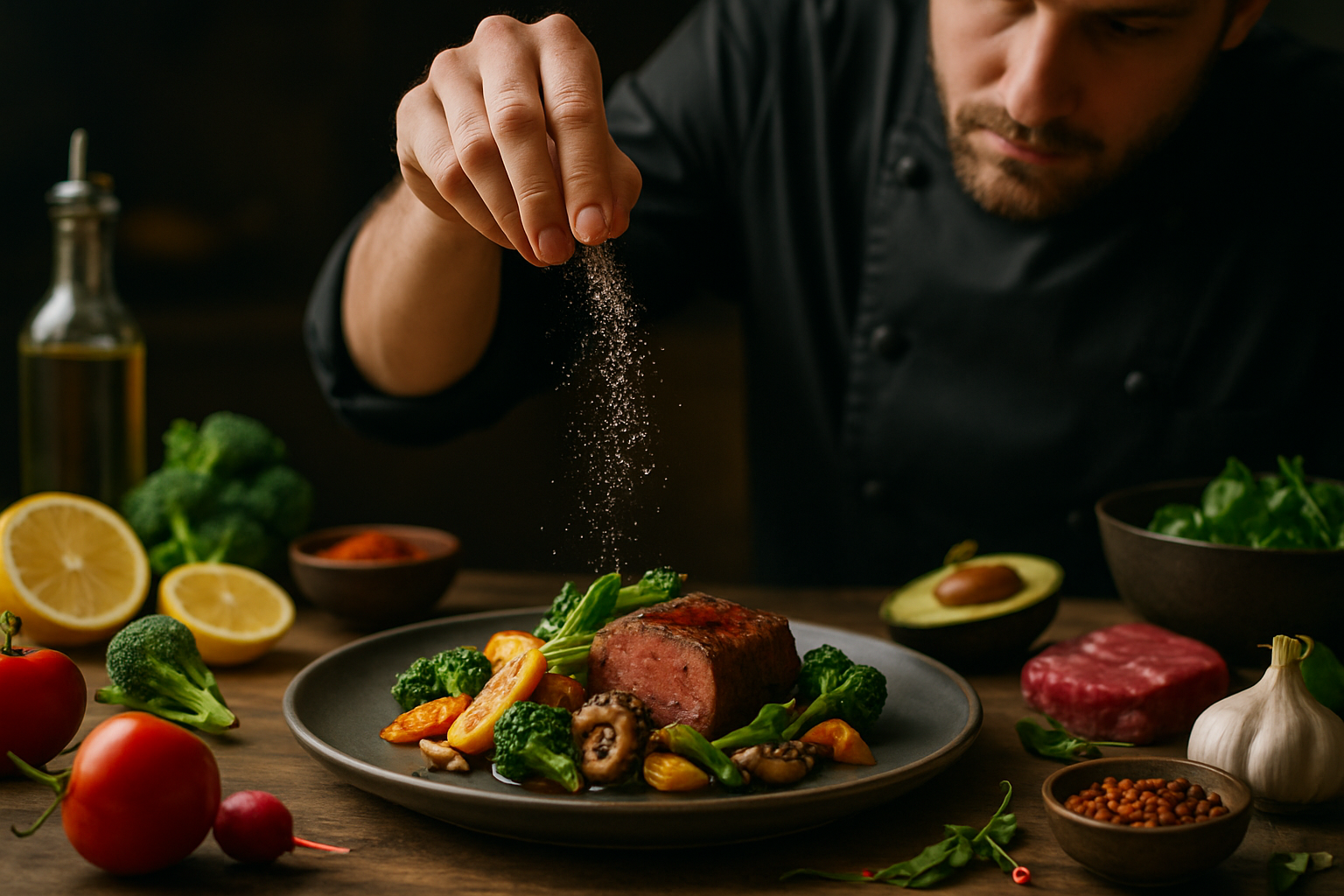Culinary Alchemy: The Art of Flavor Pairing
Unlock a world of taste sensations by mastering the art of flavor pairing. This culinary technique combines unexpected ingredients to create harmonious and innovative dishes that tantalize the palate. From sweet and savory combos to umami-rich pairings, we'll explore the science and creativity behind this gastronomic adventure.

The key to successful flavor pairing lies in understanding the chemical compounds that make up different foods. Ingredients that share similar flavor compounds often pair well together, even if they seem unlikely partners at first glance. This is why chocolate and chili, or strawberries and basil, create such delightful combinations.
Unexpected Duos That Wow
Some of the most exciting flavor pairings come from combining ingredients that seem worlds apart. Take, for example, the combination of watermelon and feta cheese. The sweet, juicy watermelon perfectly balances the salty, tangy feta, creating a refreshing and complex taste experience.
Another surprising duo is blue cheese and dark chocolate. The creamy, pungent cheese complements the rich, slightly bitter chocolate, resulting in a decadent and sophisticated flavor profile. These unexpected pairings challenge our taste buds and open up new culinary horizons.
Umami: The Fifth Taste
Umami, often described as a savory or meaty taste, plays a crucial role in flavor pairing. Foods rich in umami, such as mushrooms, tomatoes, and aged cheeses, can enhance and deepen the flavors of other ingredients. For instance, adding a sprinkle of Parmesan cheese to a tomato sauce not only introduces saltiness but also amplifies the overall umami taste of the dish.
Experimenting with umami-rich ingredients can elevate simple dishes to new heights. Try pairing roasted mushrooms with a splash of soy sauce, or adding a dollop of miso paste to your next batch of caramel sauce for a complex, savory-sweet treat.
Sweet and Savory: A Match Made in Heaven
The interplay between sweet and savory flavors is a cornerstone of innovative cuisine. This combination works by creating a balance that keeps your taste buds engaged and prevents flavor fatigue. A classic example is the Hawaiian pizza, where the sweetness of pineapple contrasts with the saltiness of ham and cheese.
For a modern twist, try pairing fresh strawberries with balsamic vinegar and black pepper. The acidity of the vinegar enhances the fruit’s natural sweetness, while the pepper adds a subtle heat that rounds out the flavor profile. This unexpected combination is a perfect addition to salads or as a topping for grilled meats.
Texture: The Unsung Hero of Flavor Pairing
While taste is crucial, texture plays an equally important role in creating memorable flavor pairings. Contrasting textures can enhance the overall eating experience and make flavors more pronounced. Consider the popular combination of crispy bacon and creamy avocado. The contrast between the crunchy bacon and the smooth avocado creates a satisfying mouthfeel that complements the flavors.
Experiment with different textures in your cooking. Try pairing crispy fried shallots with velvety pumpkin soup, or adding crunchy toasted nuts to a creamy risotto. These textural contrasts will elevate your dishes and add depth to your flavor pairings.
Flavor Pairing Tips and Tricks
-
Start with a flavor you love and experiment with complementary tastes
-
Use the “bridge” technique: find an ingredient that pairs well with both flavors you want to combine
-
Trust your nose: if two ingredients smell good together, they’ll likely taste good together
-
Don’t be afraid to mix cuisines: fusion cooking often leads to exciting flavor discoveries
-
Keep a flavor journal to record successful (and unsuccessful) pairings
-
Use online flavor pairing tools and databases for inspiration
-
Remember that personal preference plays a role: trust your taste buds
Mastering the art of flavor pairing opens up a world of culinary possibilities. By understanding the science behind taste and experimenting with unexpected combinations, you can create dishes that surprise and delight. Whether you’re a home cook or a professional chef, embracing the principles of flavor pairing will take your culinary creations to new heights. So go ahead, be bold, and let your taste buds guide you on this exciting gastronomic journey.




